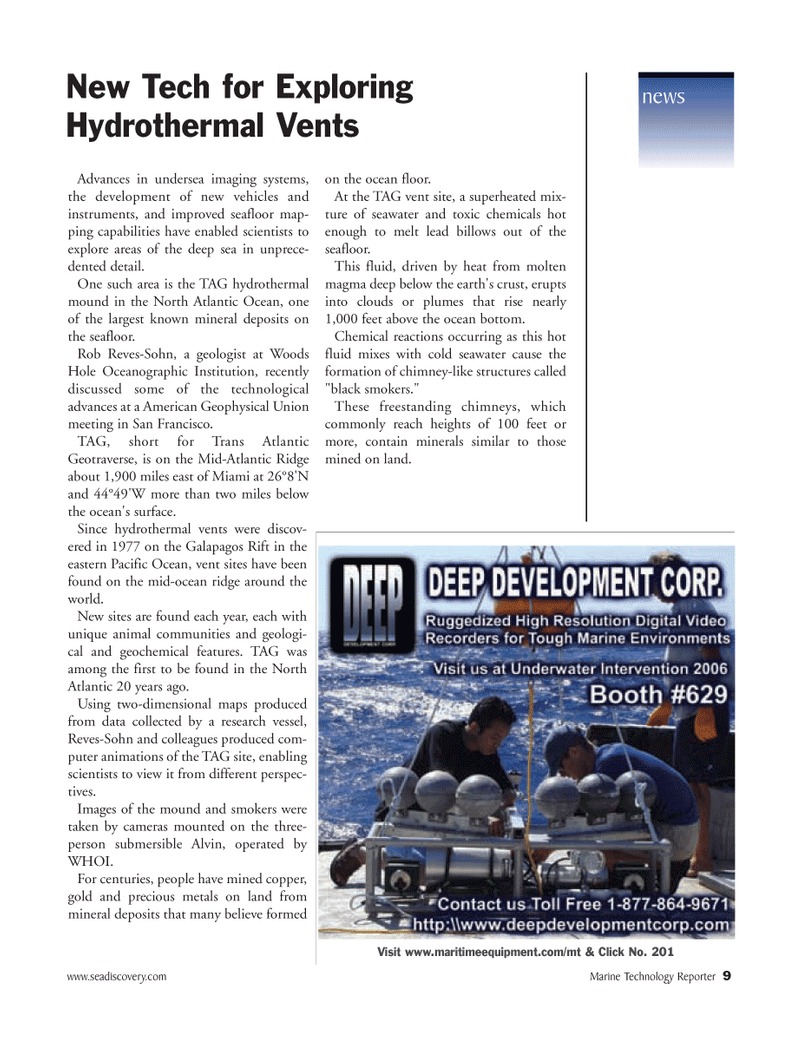
Page 9: of Marine Technology Magazine (January 2006)
Marine Science Institutions
Read this page in Pdf, Flash or Html5 edition of January 2006 Marine Technology Magazine
www.seadiscovery.com Marine Technology Reporter 9
Advances in undersea imaging systems, the development of new vehicles and instruments, and improved seafloor map- ping capabilities have enabled scientists to explore areas of the deep sea in unprece- dented detail.
One such area is the TAG hydrothermal mound in the North Atlantic Ocean, one of the largest known mineral deposits on the seafloor.
Rob Reves-Sohn, a geologist at Woods
Hole Oceanographic Institution, recently discussed some of the technological advances at a American Geophysical Union meeting in San Francisco.
TAG, short for Trans Atlantic
Geotraverse, is on the Mid-Atlantic Ridge about 1,900 miles east of Miami at 26°8'N and 44°49'W more than two miles below the ocean's surface.
Since hydrothermal vents were discov- ered in 1977 on the Galapagos Rift in the eastern Pacific Ocean, vent sites have been found on the mid-ocean ridge around the world.
New sites are found each year, each with unique animal communities and geologi- cal and geochemical features. TAG was among the first to be found in the North
Atlantic 20 years ago.
Using two-dimensional maps produced from data collected by a research vessel,
Reves-Sohn and colleagues produced com- puter animations of the TAG site, enabling scientists to view it from different perspec- tives.
Images of the mound and smokers were taken by cameras mounted on the three- person submersible Alvin, operated by
WHOI.
For centuries, people have mined copper, gold and precious metals on land from mineral deposits that many believe formed on the ocean floor.
At the TAG vent site, a superheated mix- ture of seawater and toxic chemicals hot enough to melt lead billows out of the seafloor.
This fluid, driven by heat from molten magma deep below the earth's crust, erupts into clouds or plumes that rise nearly 1,000 feet above the ocean bottom.
Chemical reactions occurring as this hot fluid mixes with cold seawater cause the formation of chimney-like structures called "black smokers."
These freestanding chimneys, which commonly reach heights of 100 feet or more, contain minerals similar to those mined on land. news
Visit www.maritimeequipment.com/mt & Click No. 201
New Tech for Exploring
Hydrothermal Vents
MTR#1 (1-16).qxd 1/10/2006 9:14 AM Page 11

 8
8

 10
10
